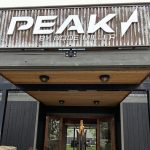The National Retail Federation’s (NRF) Chief Economist, Jack Kleinhenz, opined on Tuesday, July 8, that despite the market reaching the halfway point for 2025, it remains challenging to forecast the impact new tariffs and other government policies will have on the U.S. economy. With President Trump moving the goalposts once again by continuing the pause in increased tariffs until early August, and perhaps later, importers, manufacturers, exporters, retailers, brands, and consumers all seem to be walking around with a big question mark above their heads.
“This year began with high expectations for the strength of the U.S. economy,” Kleinhenz said, noting strong 2.8 percent year-over-year growth in gross domestic product in 2024 that was led by consumer spending and helped by business and government spending. “Since then, anxiety and confusion have taken center stage in the economy and financial markets as uncertainty over public policy has intensified. It was difficult to judge how policy changes would impact the economy in early 2025 and it remains so now.”
Kleinhenz went on to say in his July report that economic fundamentals currently appear to be “solid,” but he also admits that uncertainty is pervasive.
“There are many crosscurrents surrounding tariffs, immigration and deregulation, and everyone is sorting through what the tariff rates are going to be, how they will impact inflation for retail products and, importantly, how long they will be in place,” Kleinhenz said.
The NRF included the economist’s comments in its July Edition of its Monthly Economic Review, which states, “Economic growth is holding up relatively well” so far this year despite uncertainty about the future.
The GDP fell at an annual rate of 0.5 percent in the first quarter, but many believe that was primarily due to a surge in imports driven by tariff announcements. In contrast, private final sales to domestic purchasers —a measure of consumer and business spending — were up 1.9 percent year-over-year. That was down from 2.9 percent growth in the previous quarter, but showed continued strength in private sector demand and that “the slowdown has been less than feared.”
Year-over-year inflation as measured by the Personal Consumption Expenditures Price Index ticked up to 2.3 percent in May from 2.1 percent in April. Unadjusted for inflation, personal income and consumer spending were both up 4.5 percent in May. And Core Retail Sales, as defined by the NRF, based on Census Bureau data but excluding automobile dealers, gasoline stations and restaurants, were up 3.9 percent year-over-year both in May and for the first five months of the year.
The labor market is said to be performing better than expected, with employers adding 147,000 jobs in June, just above the monthly average of 146,000 over the past year, and the unemployment rate was largely steady at 4.1 percent. Job openings rebounded to 7.8 million in June, “indicating continued demand for workers” and exceeding the 7 million people unemployed.
Kleinhenz said that tariffs have yet to be clearly seen in prices.
“However, if the large increases in tariffs announced earlier this year take effect and are sustained, they will infiltrate consumer prices, causing a downshift in spending that is likely to spill over into the labor market later in the year with higher unemployment,” Kleinhenz said.
Already that scenario will likely not play out as the Trump Administration has apparently solidified deals, or at least developed the framework, for tariff agreements with China and Vietnam, said to be over 40 percent of the total import volume into the U.S. Still, the details of those agreements remain short on details, and everyone knows where the devil resides.
Kleinhenz said the Federal Reserve is “quite unlikely” to cut interest rates this month but could be on track to do so this fall. “In the meantime, Fed officials are closely watching the ‘inflation psychology’ of consumers — how their expectations about future inflation influence their current spending and savings decisions and whether they are influenced by short-term price increases,” he noted.
Uncertainty is difficult to quantify, but Kleinhenz said an Economic Policy Uncertainty Index developed by economists at Stanford and Northwestern has reportedly fallen by half since April, when it reached its highest level since the pandemic.
With the One Big Beautiful Bill Act spending measure signed into law, there are” many moving parts” that “could greatly alter the economic outlook” depending on how businesses and consumers react, Kleinhenz said. Nonetheless, he said adoption of the bill, which provides business incentives, permanent tax cuts for individuals and measures to encourage more workforce participation, “meaningfully reduces fiscal policy uncertainty.”
The NRF joined several other trade associations, particularly on the retail side of the business, in support.
Following the House vote to pass the Senate-amended reconciliation package, NRF President and CEO Matthew Shay issued the following statement:
“As we prepare to recognize our nation’s 249th birthday tomorrow, today we want to celebrate Speaker Johnson and Majority Leader Thune for their strong leadership and steadfast commitment to getting President Trump’s ‘One Big Beautiful Bill’ through Congress and to the president’s desk for his signature before the July 4th holiday.
“President Trump campaigned on a promise to revitalize the U.S. economy. This historic legislation ensures that his vision to push forward pro-growth policies and measures that rein in government spending becomes a reality to the benefit of American businesses and hard-working families for generations to come.”
Image under license with AdobeStock
















